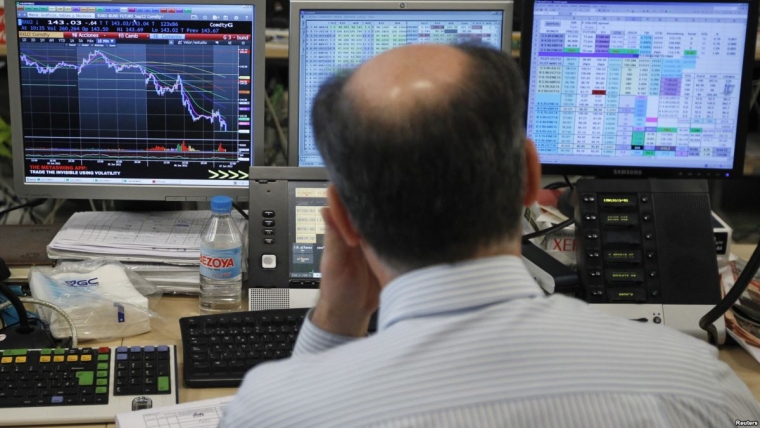
On Friday, investors cheered on the prospects that the US economy was heading for recession, which might trigger the Fed to reverse its previous rate hikes. US equities rose, rates fell and the USD remained under pressure. After Trump decided not to proceed with tariffs against Mexico, some recent trends might be reversed as the new week begins.
Markets were typically quiet on Friday in the lead-up to the US employment report and were buoyed after the weak report. US non-farm payrolls rose by just 75k in May and with downward revisions to prior months the data were well below market expectations. The average job growth over the past four months was 127k, the weakest since 2012, adding to the dataset showing that the US economy is slowing. Wages growth also underwhelmed even as the unemployment rate remained steady.
The data triggered an immediate falls in rates, with the US 2-year treasury rate down as much as 10bps to a low of 1.77%, before ending the session down 3bps at 1.85%. The 10-year rate fell to a fresh 21-month low of 2.05%, before ending down 4bps at 2.08%. Rate falls were triggered by rising expectations that the run of weaker data, alongside the growing risks induced by Trump’s trade war, would prompt the Fed into easing monetary policy, with almost a full 25bps rate cut priced by July. Two rate cuts this year has become a consensus call from analysts, while the market is pricing in a better-than-even chance that three rate cuts will be delivered by the end of the year. At the end of last month, the NY Fed’s probability-of-recession indicator had risen to 30% and is likely higher now. Levels above 30% have been a very good predictor of previous recessions, with the 3m-10yr yield curve providing the same message, with each passing day in negative territory adding to the chance.
The S&P500 rose by just over 1%, taking its weekly gain to 4.4%, eating well into the 6.6% loss seen last month – the market buoyed by the prospect of the Fed delivering rate cuts (and possibly ultimately avoiding economic recession), never mind the weaker earnings outlook.
After Friday’s close, Trump indicated that the US had reached agreement with Mexico to help stem migrant flows, so import tariffs would not proceed Monday as planned. The threat of tariffs still overhangs, with 90 days to finalise the terms of additional provisions, but the market won’t be too concerned with the detail. The threats of tariffs against Mexico were a key driver of the market over the past week or so – lower US rates and a weaker USD – so as the new week begins in theory there should be some reversal of these moves.
On Friday the USD continued to weaken on expectations that it would be losing some interest rate support from the Fed, with the various USD indices we monitor down 0.3-0.5% and all of them close to or breaking below their 200-day moving average – raising the prospect that end of the upward trend of the USD has been reached.
The NZD was one of the better performers, ending the week at 0.6665 after touching 0.6680, and taking its weekly gain above 2%. The low on Friday (afternoon) was 0.6614, soon after we saw pressure on CNH after China’s central bank governor said there’s “tremendous” room to adjust monetary and fiscal policy if the trade war deepens. The PBoC’s Yi signalled that he’s not wedded to defending the yuan at a particular level, which made the market second-guess how really important the 7.00 mark was in USD/CNY.
CAD also performed well, supported by a strong employment report. Canada’s unemployment rate unexpectedly fell to 5.4%, its lowest rate since the mid-1970s and wage inflation was also stronger. The data helped trim expectations that the Bank of Canada would be cutting rates this year. Of the commodity currencies, the AUD dragged the chain, rising only modestly and closing the week around 0.70. This supported a modest move up in NZD/AUD to 0.9520.
EUR gained 0.5% to 1.335 despite ongoing weakness in German economic data, with Germany industrial production slumping in April. The soft data alongside the move lower in US Treasury rates saw Germany’s 10-year rate close down 2bps at a record low of minus 0.26%.
JPY underperformed in the lower global rate environment, with USD/JPY down by “only” 0.2% to 108.20. NZD/JPY closed the week at 72.1, taking its weekly gain to 2% and breaking seven consecutive weeks of losses.
In the day ahead, the weekend news on Mexican tariffs will likely be the key driver of market movements, but otherwise it should be quiet with Australia on holiday. China trade data later today might elicit some market movements if we’re lucky.
Get our daily currency email by signing up here:
Daily exchange rates
Select chart tabs
BNZ Markets research is available here.

We welcome your comments below. If you are not already registered, please register to comment
Remember we welcome robust, respectful and insightful debate. We don't welcome abusive or defamatory comments and will de-register those repeatedly making such comments. Our current comment policy is here.